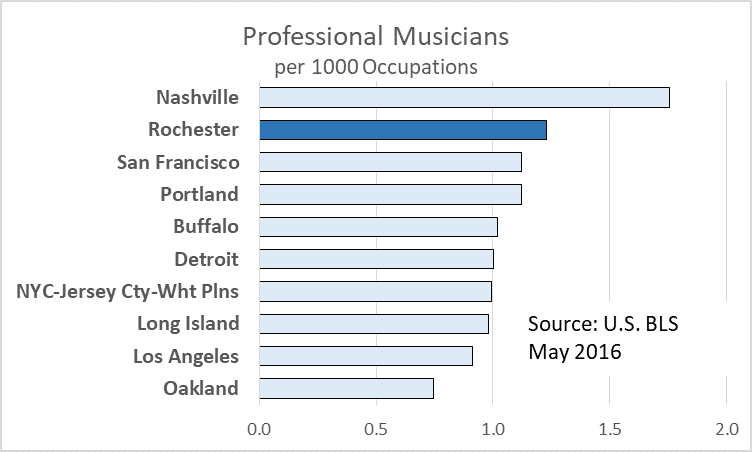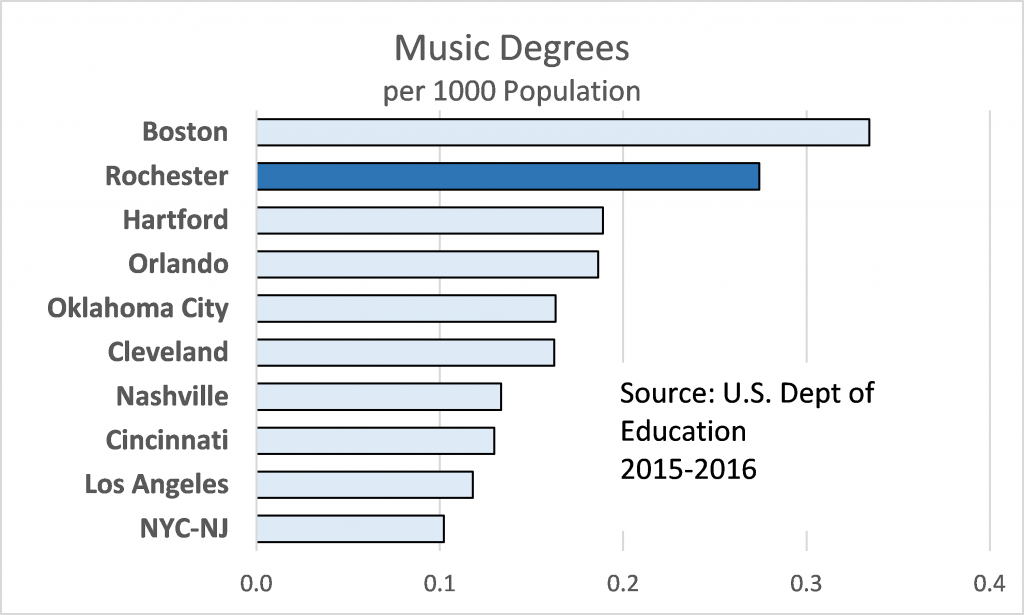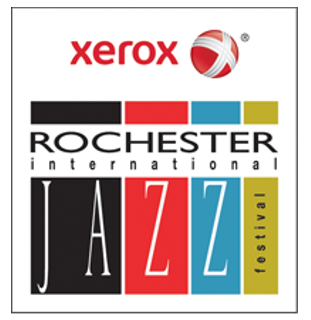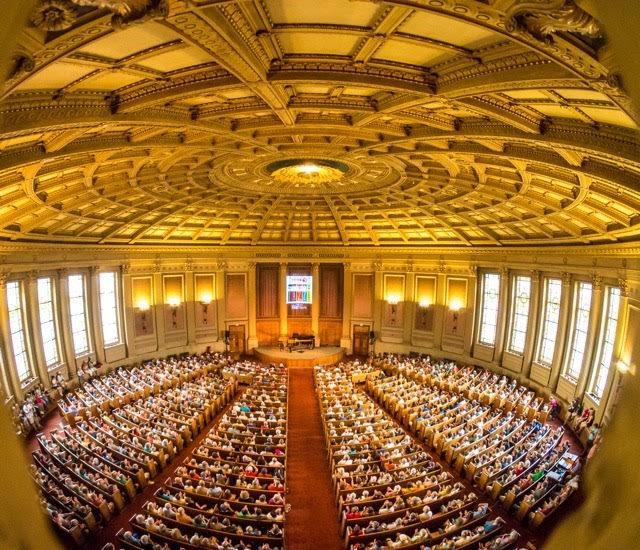 Question: Which city has the largest concentration of professional musicians in the nation? If you guessed Nashville, you’d be right.
Question: Which city has the largest concentration of professional musicians in the nation? If you guessed Nashville, you’d be right.
 But Rochester’s in second place. Among all metro areas with at least half a million employed, Rochester leads San Francisco and Portland, both recognized for their music scene.
But Rochester’s in second place. Among all metro areas with at least half a million employed, Rochester leads San Francisco and Portland, both recognized for their music scene.
And Austin—“The Live Music Capital of the World”—clocks in at #16. Musicians may flock to Austin for SXSW and Austin City Limits, but many of them live right here.
Many of the nation’s professional musicians learned their trade  right here, too. Among roughly the same group of large metros, Rochester colleges and universities graduate more musicians per capita than anyplace but Boston.
right here, too. Among roughly the same group of large metros, Rochester colleges and universities graduate more musicians per capita than anyplace but Boston.
Much of the credit goes to the Eastman School of Music, routinely ranked one of the globe’s top music schools. In addition to frequent performances by faculty luminaries like the Ying Quartet and lutenist Paul O’Dette, Eastman’s three principal venues bring the best musicians in the world to our ears. But the spillover from Eastman’s riches is vast. The Hochstein School of Music & Dance is the largest community music school in the nation (for a comparably-sized city).  Many of the other colleges and universities boast excellent programs. The Rochester Philharmonic is a local treasure. The Xerox International Jazz Festival has been a phenomenal success.
Many of the other colleges and universities boast excellent programs. The Rochester Philharmonic is a local treasure. The Xerox International Jazz Festival has been a phenomenal success.
Ned Corman, musician, music educator & cheerleader for the Rochester music scene, has documented the many ways music permeates the community, including a wealth of semi-professional and amateur ensembles. If you played the flute or sang in a choir in high school, you can find an outlet for that creative impulse. Artistic creativity spills over into other pursuits, too. Many professionals in law, business or medicine are active amateur musicians and find their quality of life enhanced by the opportunities Rochester presents.
 And that’s just music—Rochester is home to the world-renowned Garth Fagan Dance, plus a number of theater groups like Geva and Blackfriars, and the touring shows promoted by Rochester Broadway Theatre League.
And that’s just music—Rochester is home to the world-renowned Garth Fagan Dance, plus a number of theater groups like Geva and Blackfriars, and the touring shows promoted by Rochester Broadway Theatre League.
Rochester is undeniably a “City of the Arts.” It is past time for our public “branding” to reflect our most distinctive characteristic.

Lyric Theatre
Let me pivot (cautiously!) to Parcel 5 and the performing arts center controversy. We studied this issue when it was part of County Executive Maggie Brooks’ Renaissance Square project. There have been a number of changes since. The Eastman School built the magnificent Hatch Hall. The Lyric Opera acquired the stunning 1st Church of Christ Science, now the Lyric Theatre. Kodak’s Theater on the Ridge has been rebranded as the Kodak Center for Performing Arts. Nazareth College Arts Center underwent a renovation and is currently building a 550-seat hall. That a city our size can even consider building another performing arts venue is testimony to the vitality of the local arts community.
Arnold Rothschild and the Rochester Broadway Theatre League (RBTL) have yet to succeed in their quest for a new home, however. The Auditorium is tired and has many disadvantages. I applaud Mr. Rothschild for his tenacious advocacy for a better venue for Broadway productions. He’s made two important converts, Mayor Warren and Tom Golisano. Mr. Golisano also deserves our gratitude for his willingness to make such a significant investment in the community.
But a facility like this does not exist in a vacuum. What has bedeviled the question of a new venue is this: Whose performing center is it? Which leads to the next: Who gets to decide where it is and what it will be? Both location and configuration are consequential.
RBTL would like to own and control the facility. We don’t know if Mr. Golisano placed any conditions on his pledged $25 million. Presumably RBTL has sole discretion over its use. RBTL’s problem is that $25 million is far from enough. An $85 million price tag has been floated, which would leave Mr. Rothschild short $60 million, over 30 times total RBTL contributions for 2011-2015. That’s a heavy lift—and it strongly suggests that additional public support will be needed. Moreover, the facility has yet to be designed—history suggests that the cost estimate will be higher when designed and that it will cost yet more to build.
RBTL asserts that the facility will break even, provided that it isn’t saddled with debt. It has released the results of a pro forma, but many of the underlying assumptions are unrevealed and untested.
Thus, much as I admire RBTL and its ability to operate successfully over many years, the public’s stake in this facility is almost certain to grow as the idea takes shape, the building is completed and it begins operation. If NYS taxpayers were to provide the $20 million floated by Mayor Warren, this should trigger a change in control. And if a significant taxpayer contribution is not forthcoming, RBTL will probably be forced to assume debt to complete the project, thus making annual operating deficits nearly inevitable. RBTL has neither the income nor the assets to weather prolonged deficits—its 2015 IRS Form 990 shows net assets of $642,845 and net revenue of $18,261.
I’m aware of the challenge involved in “design by committee” and the complexity of financing such an ambitious new space amidst a clamor of competing interests. Yet taxpayers will inevitably play a “backstop” role in the venue’s construction and operation. Let’s acknowledge this fact at the outset and work collaboratively with RBTL to achieve something wonderful for our City of the Arts.